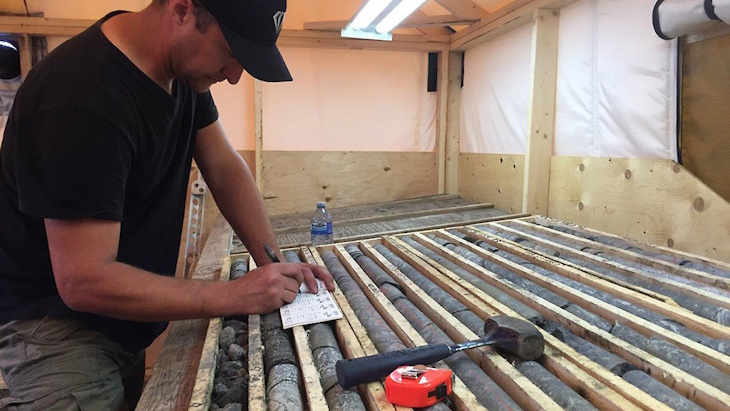
The potential use of in-situ leach (ISL) mining - also referred to as in-situ recovery, or ISR - at Waterbury Lake was first evaluated in an independent preliminary economic assessment carried out in 2020. The 2023 field test programme has been carried out to provide data on the permeability of the Tthe Heldeth Túé (THT) deposit, and to collect a database of hydrogeological and metallurgical data to further evaluate the ISL mining conditions at the deposit.
A test pattern of 8 small-diameter wells - four monitoring wells, two pump/injection wells, one Vibrating Wire Piezometer and one recharge well - were drilled in the Eastern Pod of THT to carry out hydrogeologic studies and ion tracer tests. Samples from the drill core recovered from drilling the test wells will also be used to provide further datasets on the deposit. Core material from the wells in the mineralised zone will also be used to verify and update the current mineral resource estimate for the deposit and support future wellfield design and mineral processing assessments.
Denison President and CEO David Cates said the programme had "delivered excellent results, confirming our previous expectations that THT can be amenable to ISR mining and should be considered as a potentially low-cost and highly prospective uranium development project. … We continue to meaningfully invest in our exploration and development pipeline projects, and the results from the ISR field test programme support bringing THT forward for additional evaluation, and reinforce the project's potential to become Denison's second ISR uranium mine development asset in the Athabasca Basin."
The Waterbury Lake project, in northern Saskatchewan, is 67.41% owned by Denison Mines Corp and hosts the THT - formerly known as J Zone - and Huskie uranium deposits. The project is close to key regional infrastructure, including roads and the provincial power grid, and both uranium deposits are within 20 km of Denison's 22.5%-owned McClean Lake mill. The remaining 32.59% of the project is owned by Korea Waterbury Lake Uranium Limited Partnership, a consortium of investors in which Korea Hydro & Nuclear Power holds a majority position.
ISL recovers minerals from ore in the ground by dissolving them in situ. The resulting solution is then pumped to the surface, where the minerals are recovered. This causes little surface disturbance and generates no tailings or waste rock, and is a lower cost option than underground or open-pit mining, but it requires suitable geology: the orebody needs to be permeable to the liquids used, and located so that groundwater away from the orebody cannot become contaminated.
More than half of the world's uranium production is now produced by ISL, but the technique has not so far been used in Canada. However, Denison is looking to use ISL at the Phoenix deposit at the Wheeler River project, also in Saskatchewan, where feasibility field tests have now been completed. The company is also looking into the potential use of ISL at the Midwest project, for which it completed a preliminary conceptual mining study earlier this year. The Midwest project is a joint venture owned by Denison (25.17%) and Orano Canada Inc (74.83%).